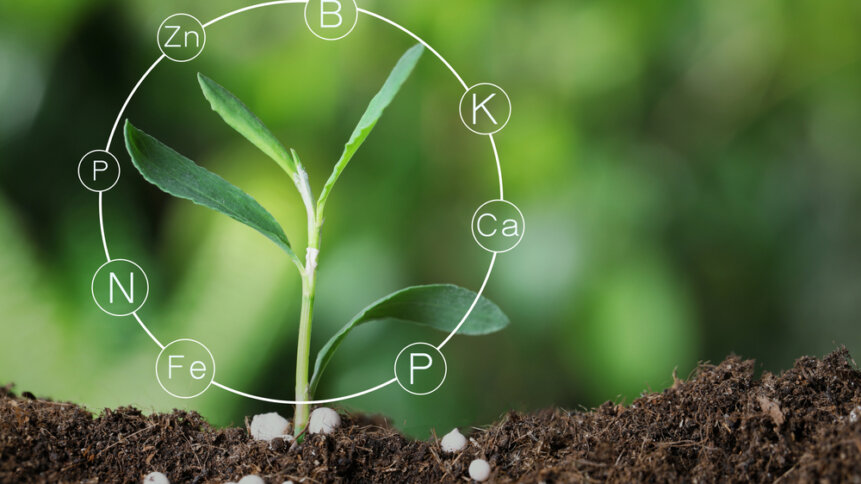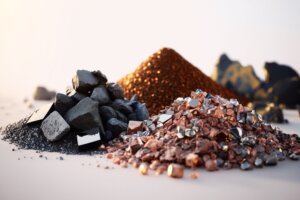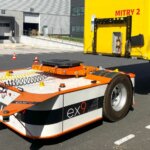Could rare earths be the answer to reducing Europe’s supply chain problems?

• Europe has supply chain problems – and China has traditionally held the key to them.
• A new process could solve those supply chain issues, though – through fertilizer.
• The processing of rare earths could tackle supply chain shortfalls, assuming a deal can be done.
Europe’s supply chain weaknesses are an understood phenomenon. But according to Dr Arne Petter Ratvik, a metals expert at SINTEF (an independent Norwegian research organization), fertilizer might well be the answer to those problems. Dr. Ratvik notes that raw materials required by energy, auto, electronics, computer, and other industries can be extracted from standard fertilizer production.
At the core of these findings are rare earths, raw materials found in the Earth’s crust. These are already being used in industrial magnets for their powerful and efficient magnetic properties. From smartphones to tablets and microwaves to refrigerators, rare earths are key components that play crucial roles in batteries, circuits and screens, to name just a few.
Currently, most rare earth reserves are located in China. In fact, according to the European Commission, China processes the entire global supply of rare earths essential for permanent magnets. Countries with the largest rare earth reserves are:
- China
- Vietnam
- Brazil
- Russia
- India
- Australia
- USA
- Greenland
- Canada
- South Africa
Europe may not be a big player in the rare earths reserve market, but recent findings could change that. In January 2023, LKAB, a state-owned mining company in Sweden, reportedly discovered Europe’s largest deposit of rare earth metals. The find in Kiruna, Lapland means that Europe may need to rely less on imported raw materials.
A European supply chain priority?
Safeguarding Europe’s access to raw materials has become a key priority on the EU political schedule, as geopolitical and strategic concerns highlight Europe’s supply chain vulnerabilities. This has led to various EU funded research projects, such as Dr. Ratvik’s. The aim of this particular project, named SecREEts, was to increase Europe’s supplies of rare earths through the extraction of these materials during the manufacturing process of fertilizer.
The SecREEts project operated for a span of four and half years, finishing in November 2022. According to Dr. Ratvik, “rare earths from fertilizers could produce very good magnets,’ which can help ease the burden on Europe’s supply chain.
In March 2023, the European Commission suggested establishing targets across the European Union, specifying a minimum of 10% for extraction, 15% recycling, and 40% for the processing of critical raw materials, such as rare earths, within Europe.
The SecREET’s project focused on threeout of the 17 metallic elements that make up rare earths. It is these elements that contain properties that allow for technological advances in various industries. The three rare earths studied were neodymium, dysprosium, and praseodymium, each one critical for the EU to transition to green-energy consumption. These rare earths are already being used in the development of permanent magnets in wind turbines and electric cars.
The extraction method developed by Dr. Ratvik and his team could meet approximately five to 10% of Europe’s requirements for these three rare earths. Dr. Ratvik said, “We developed an integrated extraction process within the fertilizer production process to take out the rare earth elements.” Currently, rare earths in phosphate rocks, which constitute 0.3% to 1%, are not utilized for additional value during the production of fertilizer. The process involves phosphate rocks being dissolved in acid, followed by precipitation to filter out unwanted elements.
In order to achieve the new-found fertilizer method, the SecREET’s researchers added another precipitation step. This enabled rare earths to be extracted from the production stream of the fertilizer. From there, the rare earths were processed further and used by magnet producers in the UK and Germany. According to Dr. Ratvik, the resulting magnets were powerful and high-performing.
There are still obstacles to overcome. Both Russia and Ukraine supply large quantities of phosphate rocks for fertilizer manufacturing, but the current conflict could stand in the way of the SecREETs extraction technique being used on a global scale. The answer to Europe’s supply chain woes could be in Asia, however, as researchers are exploring a possible partnership between the EU and that region.
Dr Jewellord Nem Singh, a critical mineral and industrial policy expert, is currently discussing this matter with various industries and governments in South Korea and Japan. Dr Nem Singh is leading another EU-funded research project known as GRIP-ARM, looking at ways to ensure future access to critical raw materials, while mitigating the socio-environmental impacts associated with extraction.
Handling China

Rare earths – can they solve Europe’s supply chain issues?
China is undoubtedly a leader in the world of rare earths, currently controlling a large percentage of the world’s reserves. China is also dominant in processing rare earths from elsewhere around the world, with extended supply chains for medical devices and solar panels, to name a few. Other countries play key roles in China’s dominance, however, providing technologically advanced examples of various products. One example is Japan’s highly powerful permanent magnets.
China is considered a competitor as well as a key ally with the EU. That’s why GRIP-ARM is working to find a balanced relationship, and determine whether Europe can effectively eliminate China from essential segments of the supply chain associated with core technologies.
If a partnership can be agreed upon between Asia and the EU, Dr. Ratvik’s recent discovery could be a turning point for supply chains worldwide, let alone throughout Europe.









